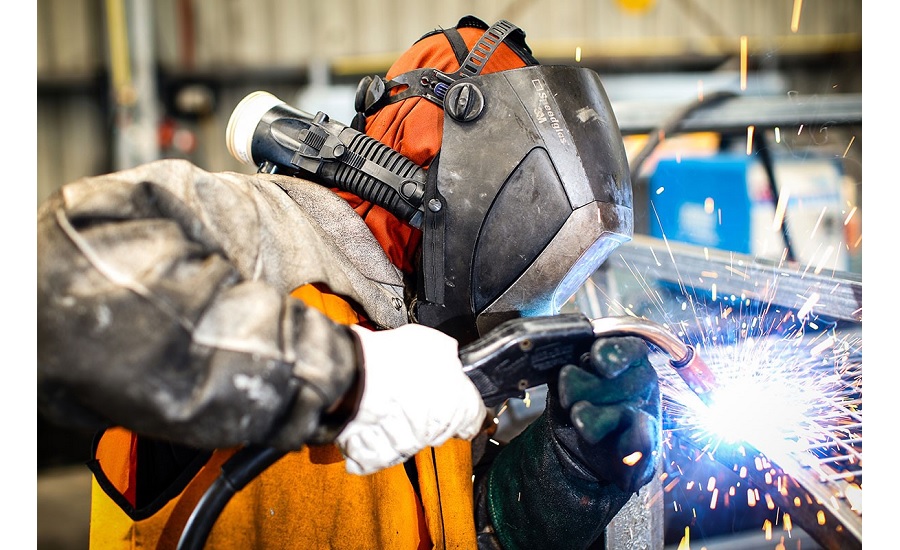Enhancing Your Welding WPS: Methods for Improved Performance and Efficiency
Wiki Article
The Ultimate Overview to Welding WPS Procedures: An Extensive Introduction for Welders
In the intricate globe of welding, Welding Procedure Requirements (WPS) work as the foundation of guaranteeing top quality, consistency, and security in welding procedures. Comprehending the subtleties of creating, carrying out, and keeping track of WPS treatments is essential for welders aiming to raise their craft and satisfy sector requirements. As we look into the different components of a WPS and discover the details of certification and qualification, we will certainly uncover the crucial function these treatments play in the realm of welding. Let's embark on a trip to unwind the intricacies and significance of WPS treatments in welding practices.Importance of WPS Procedures
Understanding the significance of Welding Treatment Specifications (WPS) procedures is essential for making certain the high quality and honesty of bonded frameworks. WPS treatments function as a roadmap for welders, detailing the necessary steps, parameters, and products called for to attain a sound weld. By adhering to WPS guidelines, welders can ensure consistency in their work, bring about structurally sound and trusted welds.One of the primary factors why WPS procedures are essential is their function in keeping weld high quality and honesty. Complying with the defined welding criteria and strategies detailed in the WPS aids prevent flaws such as porosity, splitting, or insufficient fusion, which can endanger the strength and sturdiness of the weld.

Components of a WPS
A Welding Procedure Requirements (WPS) typically comprises necessary components that information the specific demands for executing a weld, guaranteeing uniformity and quality in the welding procedure. The key elements of a WPS include crucial variables such as base steels, filler metals, interpass and preheat temperatures, welding processes, shielding gases, welding positions, and post-weld warmth therapy needs.Base steels describe the materials being signed up with, while filler metals are utilized to fill the gap between the base steels during welding. Preheat and interpass temperature levels are crucial for regulating the warmth input and avoiding problems like breaking or distortion. The welding process describes the specific technique to be made use of, whether it's gas metal arc welding (GMAW), protected metal arc welding (SMAW), or one more approach. Shielding gases shield the weld swimming pool from atmospheric contamination. Welding positions specify the positionings in which welding can be executed. Post-weld heat treatment may be essential to alleviate anxieties and improve the weld's properties. A detailed understanding of these parts is critical for producing a efficient and thorough WPS.

Credentials and Accreditation
Having actually developed the essential parts of a Welding Procedure Specification (WPS), the emphasis now shifts towards the essential elements of qualification and qualification in welding techniques.Accreditation, on the other hand, is the formal recognition of a welder's qualifications by a pertinent accreditation body or organization. Welding qualifications are normally based see here on the details welding processes, products, and settings a welder is certified to collaborate with. Holding a legitimate welding certification demonstrates that a welder fulfills market requirements and is experienced to carry out welding jobs to the required requirements.
Producing a WPS
To develop a Welding Procedure Specification (WPS) that satisfies sector requirements, careful factor to consider of welding procedures, products, and functional parameters is crucial. The first action in developing a WPS is to identify the welding process to be used, such as gas steel arc welding (GMAW) or protected steel arc welding (SMAW)
Executing and Checking WPS
Upon finalizing the comprehensive Welding Procedure Requirements (WPS) that diligently information welding procedures, products, operational criteria, and high quality assurance measures, the emphasis shifts to efficiently implementing and monitoring the well-known treatments. Implementation involves ensuring that all welders included in the job know with the WPS and follow it diligently during the welding process. This needs providing adequate training and guidance to ensure adherence to the specified procedures. Keeping track of the WPS includes continuous oversight to verify that welding activities line up with the recorded specs. Inspections, testing, and quality control actions are crucial parts of the tracking process to recognize any type of variances or problems immediately. Regular audits and reviews of the welding procedures assist in keeping uniformity and high quality throughout the project. Effective implementation and surveillance of the WPS are look at this site crucial for guaranteeing the honesty, toughness, and security of the welded joints, ultimately adding to the general success of the welding task.Verdict
Finally, understanding and adhering to Welding Treatment Specifications (WPS) is essential for welders to guarantee top quality, consistency, and security in their job. By understanding the elements of a WPS, acquiring appropriate certifications and certifications, creating comprehensive procedures, and executing and checking them effectively, welders can enhance their abilities and efficiency in welding methods. Complying with WPS procedures is important for creating top quality welds and meeting industry requirements.
In the elaborate world of welding, Welding Related Site Procedure Specs (WPS) offer as the backbone of making sure high quality, consistency, and safety and security in welding procedures. The welding procedure lays out the particular technique to be made use of, whether it's gas metal arc welding (GMAW), protected steel arc welding (SMAW), or another technique.To create a Welding Procedure Specification (WPS) that satisfies market requirements, cautious consideration of welding processes, materials, and operational specifications is vital. The initial step in creating a WPS is to identify the welding procedure to be made use of, such as gas steel arc welding (GMAW) or shielded metal arc welding (SMAW)Upon completing the thorough Welding Treatment Requirements (WPS) that thoroughly information welding processes, materials, operational criteria, and quality guarantee steps, the emphasis changes to successfully applying and checking the recognized treatments.
Report this wiki page